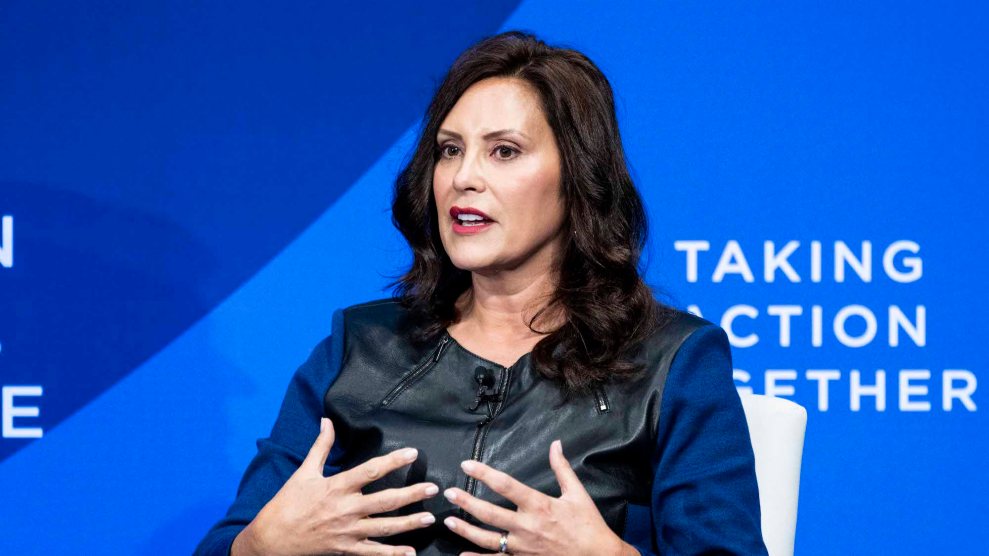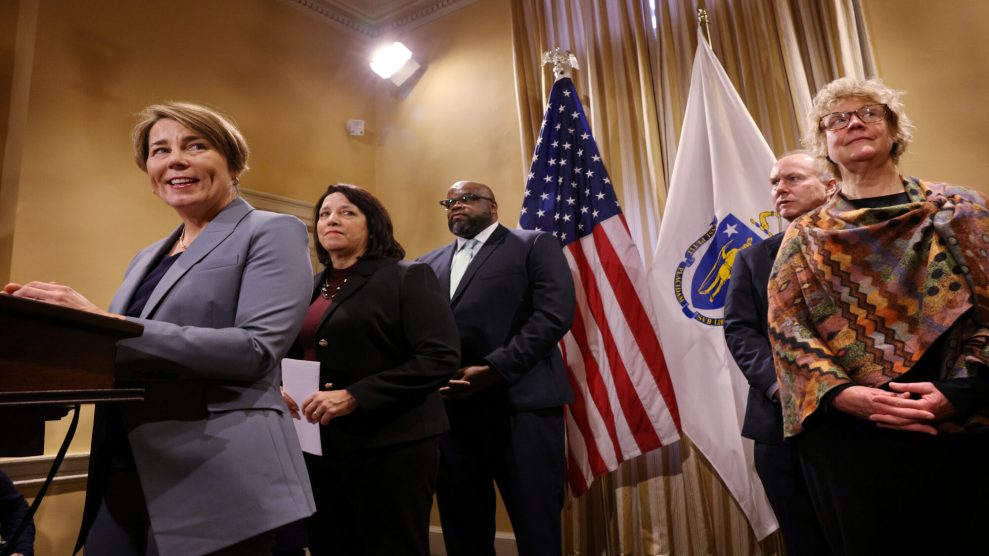
Michael Brochstein/Zuma
This story was originally published by Inside Climate News and is reproduced here as part of the Climate Desk collaboration.
Michigan is set to become the third state in the Midwest and twelfth in the country to require a shift to clean electricity.
Of all those states, Michigan is one of the most ambitious because of the extent of the change it is making.
Michigan’s target year for reaching 100 percent clean electricity is 2040, which is as soon or sooner than every state except for Rhode Island. (The bill that would do this is heading to Gov. Gretchen Whitmer’s desk for an expected signature, as Aydali Campa and I wrote this week.)
And, Michigan is starting from a place of having unusually dirty electricity, with nearly two-thirds of its current supply coming from fossil fuels.
To better understand this, I spoke with Jacob Corvidae of RMI, the clean energy research and advocacy group. He walked me through an analysis of the Michigan legislation in the Energy Policy Simulator, an open source forecasting tool put together by RMI and the think tank Energy Innovation.
I asked him to compare Michigan with Minnesota, a state that passed a clean electricity requirement in February, and Illinois, which passed its law in 2021.
All three states made leaps forward with their laws, but Michigan stands out for the “huge shift” it is making, Corvidae said with some state pride. He was born in Detroit and raised in the Detroit area and in a small town near Ann Arbor. He got his undergraduate degree at Kalamazoo College and has had several stints doing clean energy advocacy and analysis work in the state.
In 2022, Michigan got 15 percent of its electricity from renewable sources and 23 percent from nuclear power, according to RMI. With those two together, the state got 38 percent of its electricity from carbon-free sources. (Note that these percentages are slightly different than the ones from the Energy Information Administration, which I often cite, because of variations in counting methods.)
Minnesota is much cleaner at this point, with 33 percent of electricity from renewables and 25 percent from nuclear, for a carbon-free total of 58 percent.
Illinois is the cleanest of the three, with 12 percent renewables and 54 percent from nuclear, for a carbon-free total of 66 percent.
Despite having different starting points, Michigan and Minnesota would both aim to reach their goals by 2040 and Illinois has a target year of 2045.
I asked Corvidae what I may be missing in observing that Michigan has chosen a heavy lift, while this looks easy for Illinois.
One point to remember, he said, is that Illinois is larger than the other two states in terms of electricity generation, so even if it has a smaller share of coal and natural gas power plants to phase out, it still has a lot of those plants and will need to find ways to affordably and reliability replace the electricity.
Minnesota has some advantages as it reaches for clean electricity goals. A big one is that its largest utility, Xcel Energy, was the first major utility in the country to commit to get to net-zero emissions, and the company was already five years down the road of implementing its plan when Minnesota passed the clean energy law.
Michigan’s two largest utilities, DTE Energy and Consumers Energy, also have adopted plans to get to net-zero emissions, but those plans are more recent. Also, clean energy advocates have long criticized DTE for being slow to close its most polluting power plants.
DTE operates the Monroe Power Plant in Monroe, Michigan, the state’s largest coal-fired plant, with more than 3,200 megawatts of capacity. The company had initially said it would close the plant in 2040 but has since moved up the timetable to 2032.
The closing of that plant and the replacement with clean alternatives will be a big step toward Michigan meeting the 2040 target.
Michigan’s clean energy goal allows for utilities to continue to use natural gas power plants after 2040 if carbon capture systems are present. This is part of the bill that makes many environmentalists cringe.
I’m not going to defend the provision, but I can understand why utilities wanted this option in the bill, considering that natural gas power plants are Michigan’s leading electricity source, with about one-third of the state’s total. Gas’s share is much lower in Minnesota and Illinois.
One interesting takeaway is that the Energy Policy Simulator doesn’t project that any of the three states will get to 100 percent clean energy because there would remain small shares of natural gas power at the fringes of the economy. So, each state would get close to 100, but not all the way.
I’m focusing on the three Midwestern states because the transition to clean energy in this region is a vital part of the country’s transition. Midwestern states are some of the most dependent on fossil fuels and they are closer to the political center than states in the Northeast and the West Coast.
Once the transition gains momentum in the Midwest, it’s a sign that these kinds of policies have reached the mainstream.
“This is heartland policy,” Corvidae said, about the three states’ energy policies. “And I think that really signals that this is because hearts and minds are changing, people’s understanding of the challenges and possibilities are changing, and the economics have changed. And I think it is a pretty major emblem of that change.”










